Here is what you have helped us accomplish through duckDNA
Since fall 2023, we received over 7,700 applications, selected 1,059 participants, and analyzed 1,881 samples. We continue to explore ways to increase the number of participants enrolled and samples received, so stay tuned for project improvements.
We are thrilled and humbled by the dedication shown by our participants. Thank you for continuing to inspire us! Now, let’s see what you helped us accomplish.
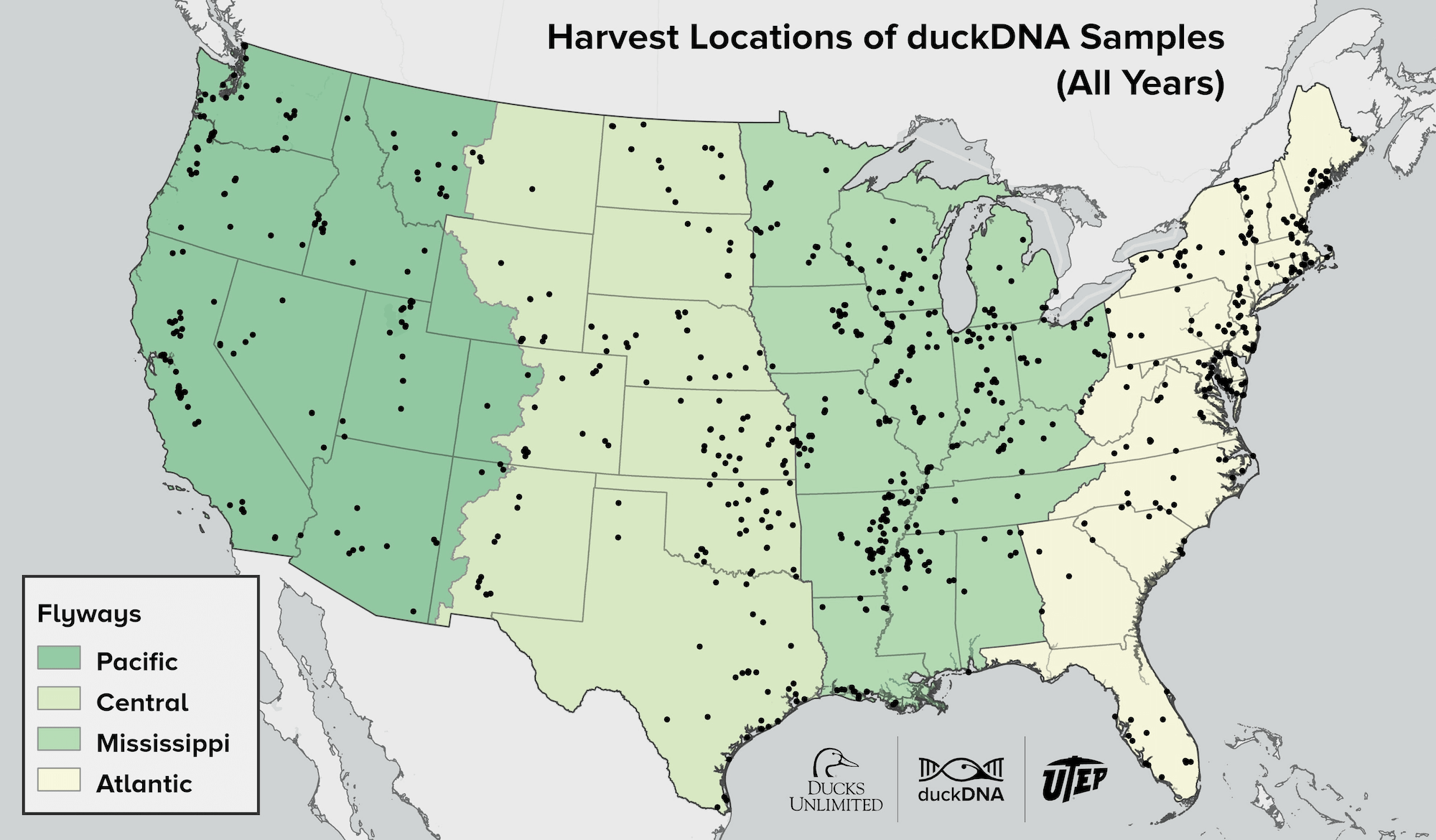
| Participants and Samples by Flyway (All Years) | ||
|---|---|---|
| Participants | Samples | |
| Pacific | 115 | 280 |
| Central | 106 | 301 |
| Mississippi | 190 | 782 |
| Atlantic | 129 | 369 |
| Unreported | 54 | 149 |
| Total | 594 | 1,881 |
A unique feature of duckDNA is its ability to confirm the genetic ancestry of hybrid offspring. Across all 1,881 samples, including those submitted for hybrid testing, we documented 37 different taxonomic hybrid combinations, of which 15 involved game-farm Mallard ancestry.
The presence of game-farm Mallard genes in wild Mallard populations is an emerging conservation concern, as research suggests that Mallards with game-farm ancestry are poorly adapted to natural habitats. Through duckDNA, we are assessing the prevalence of game-farm Mallard genes across the U.S. by analyzing the genetic make-up of harvested Mallards and Mallard-like ducks (American Black Ducks, Mottled Ducks, Mexican Ducks). Data from our first two years corroborates earlier studies showing the highest prevalence in the Atlantic Flyway, although prevalence in the Pacific Flyway was greater than expected and bears monitoring.
Of 1,232 Mallard samples submitted during our first two years, 337 (27%) contained game-farm Mallard ancestry
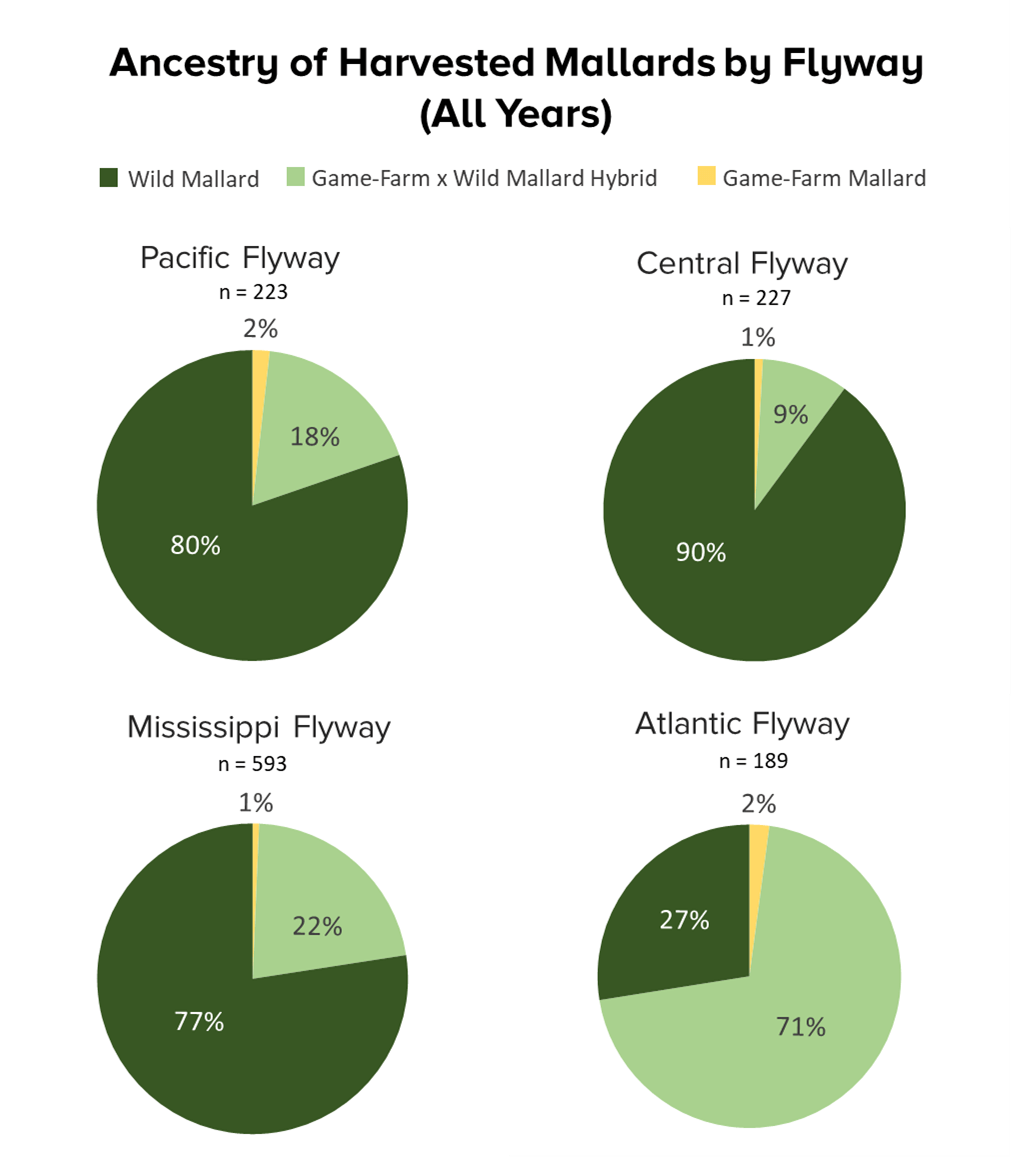
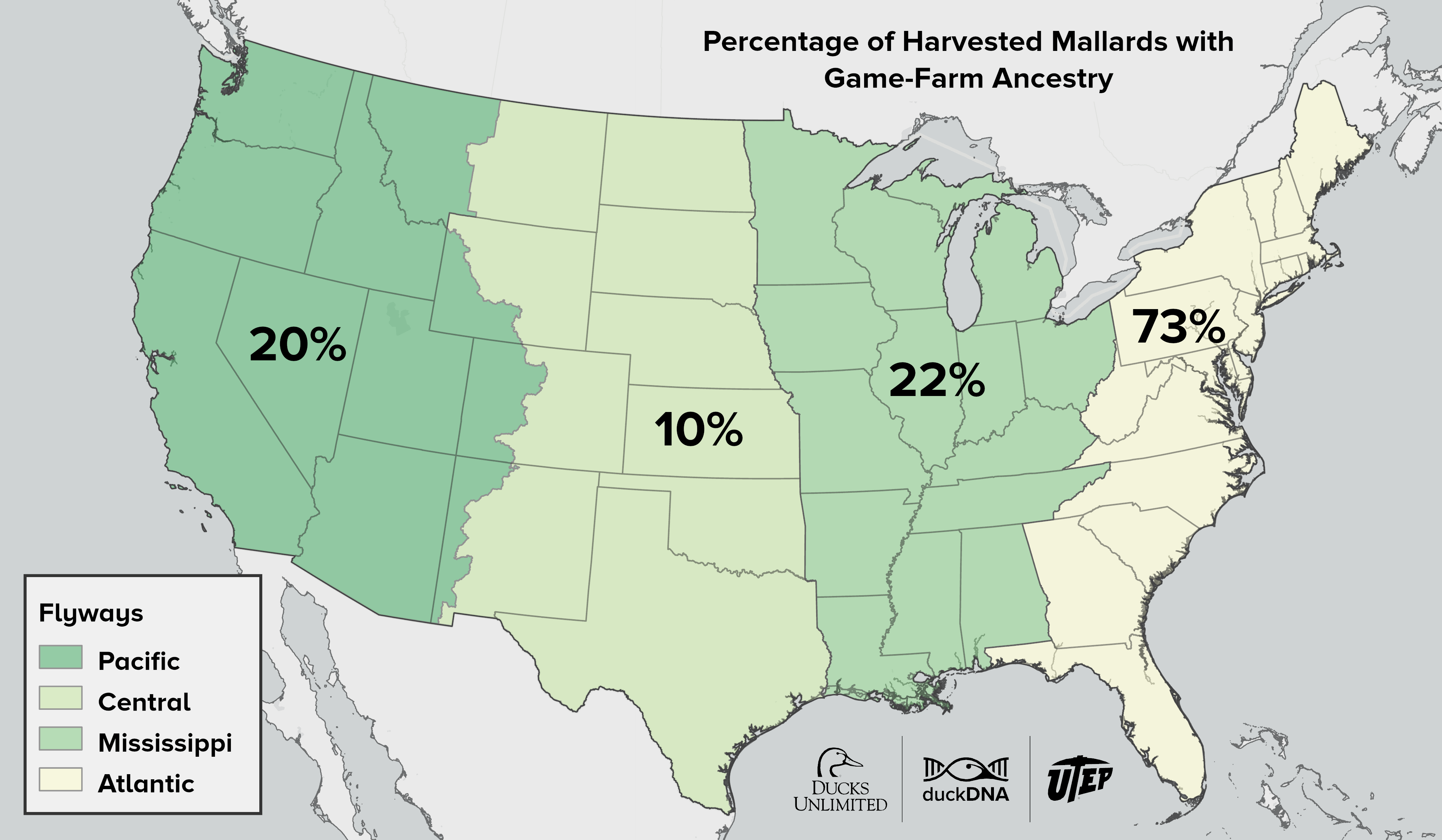
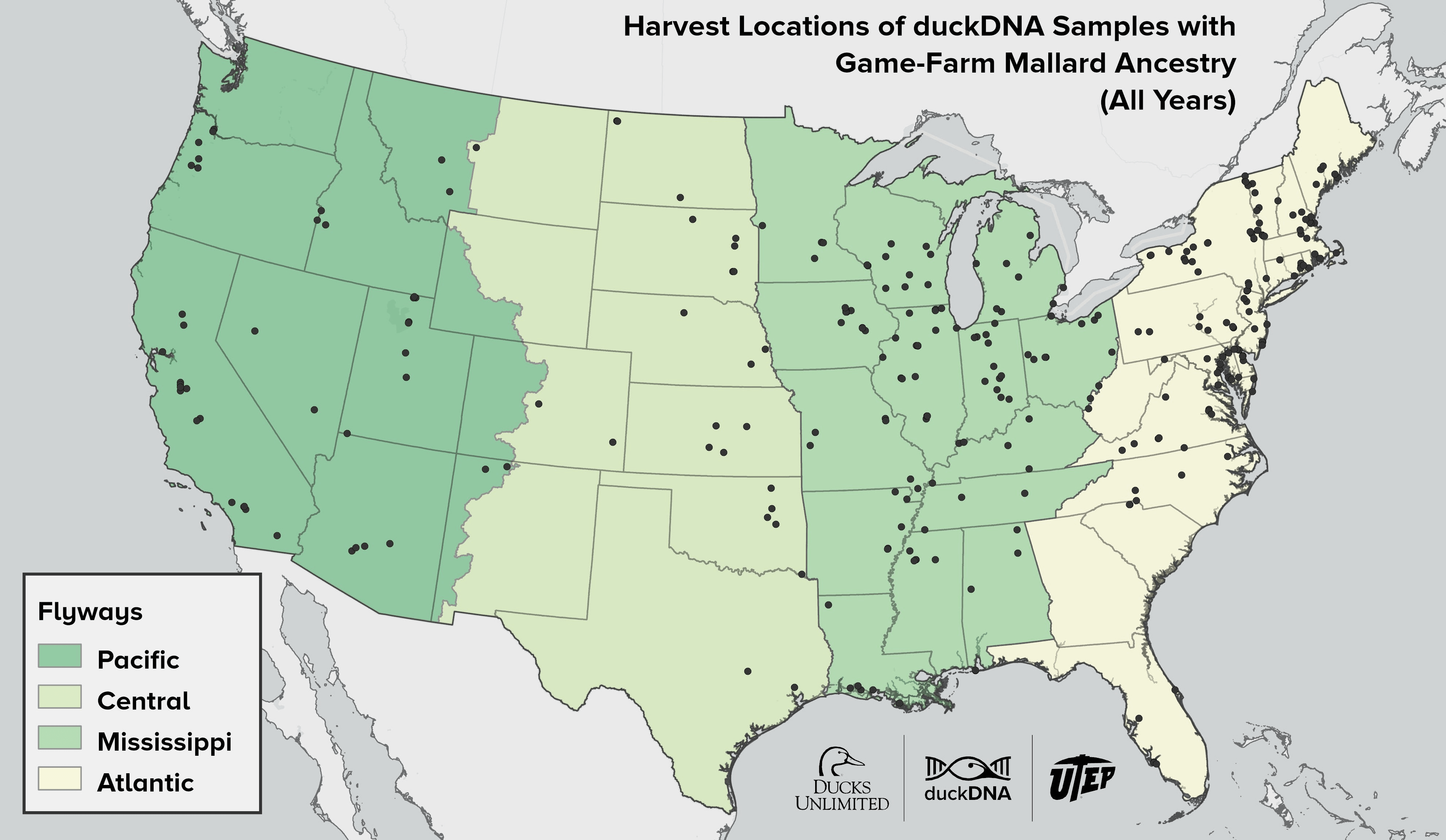
Percentages calculated across all samples containing whole or partial ancestry of a given Mallard-like species1
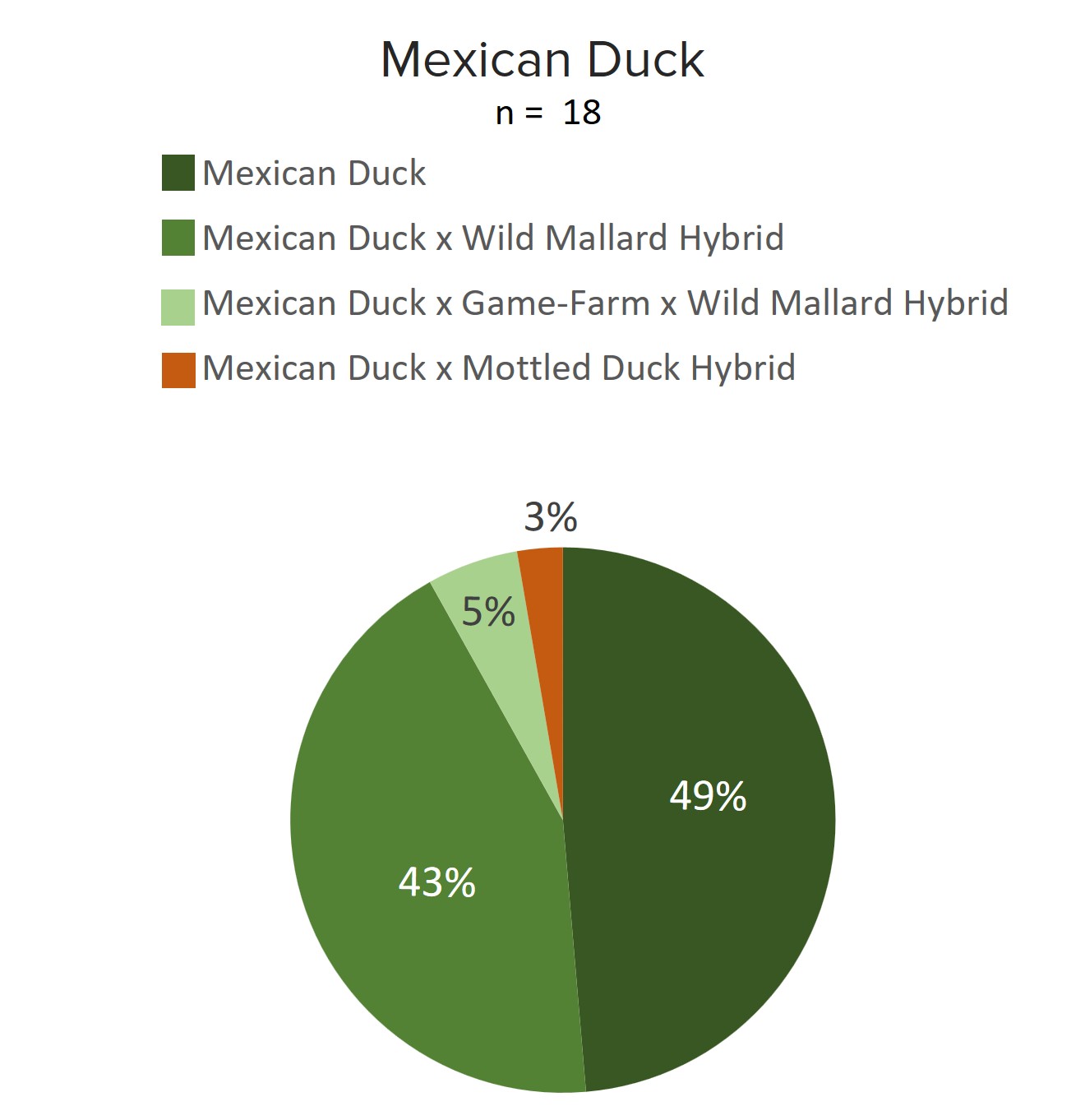
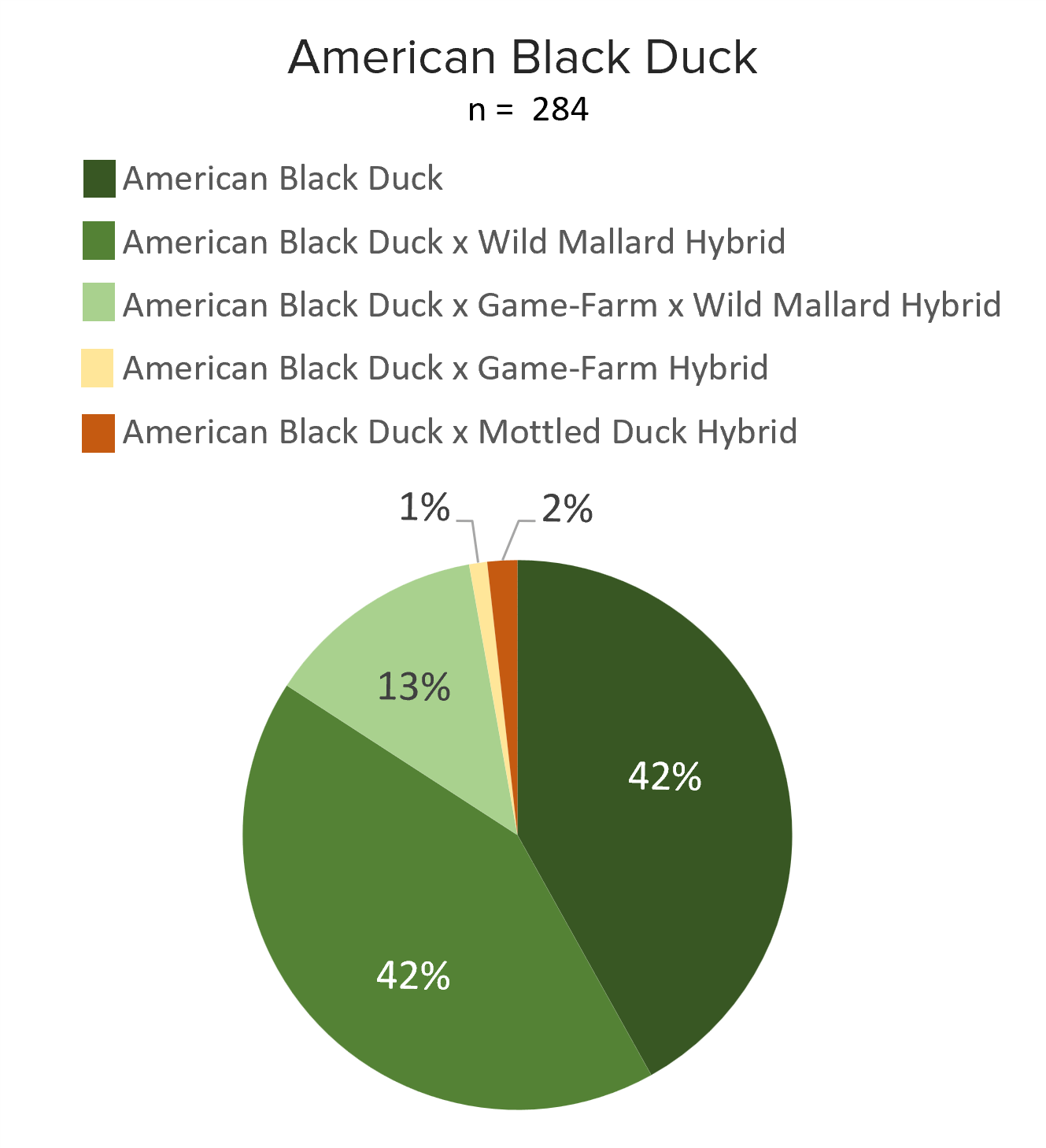
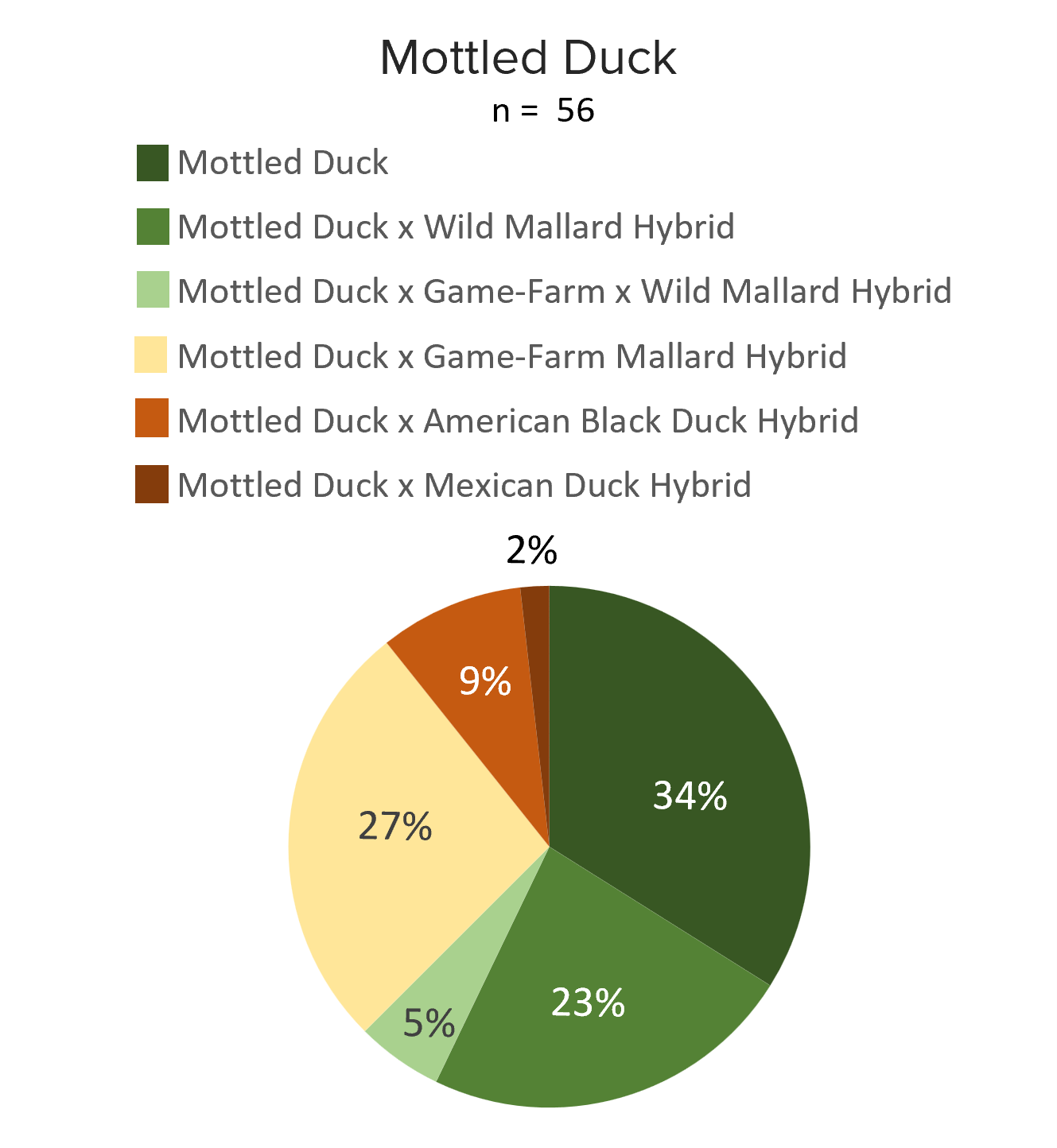
Thanks to your overwhelming support, our 2024-25 season was an incredible success. At this time, our application portal is closed, but we anticipate reopening by August. Stay informed of the latest updates and future opportunities by providing your email address and following us on Instagram and Facebook.
Ducks Unlimited uses cookies to enhance your browsing experience, optimize site functionality, analyze traffic, and deliver personalized advertising through third parties. By continuing to use this site, you agree to our use of cookies. View Privacy Policy